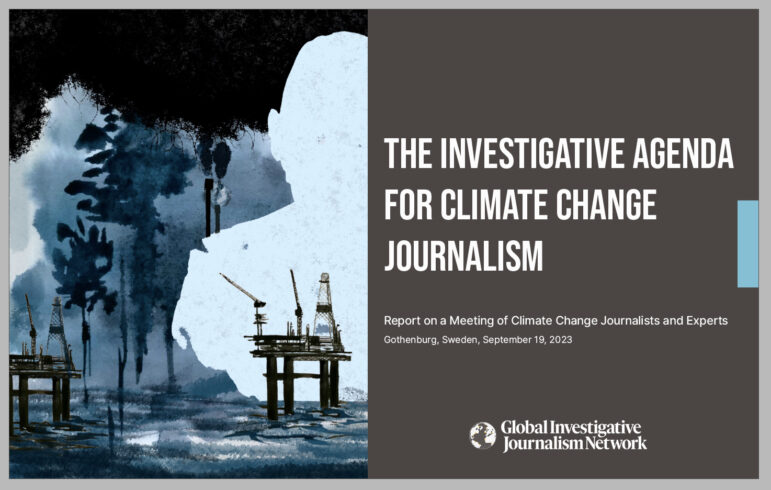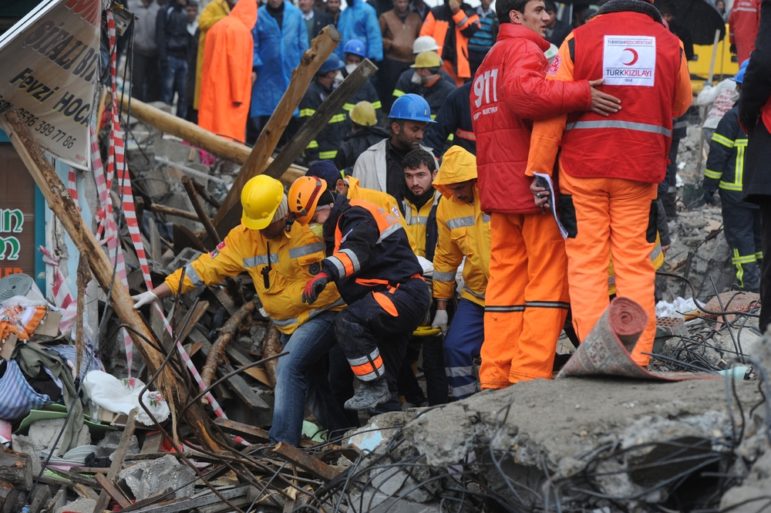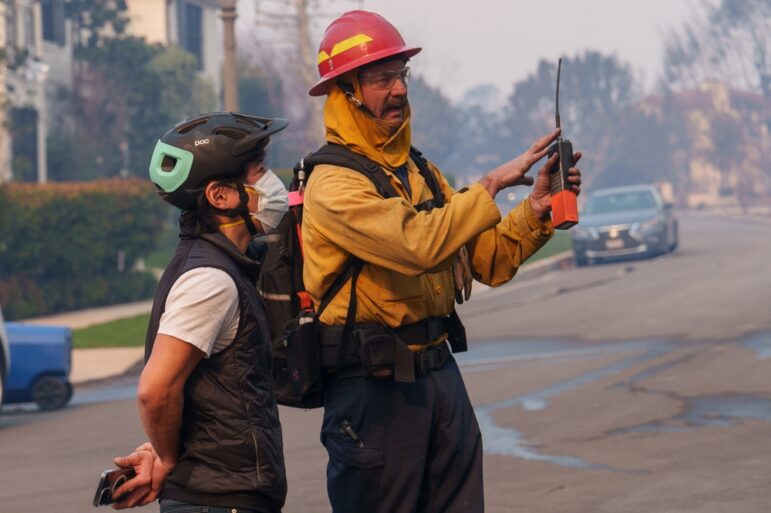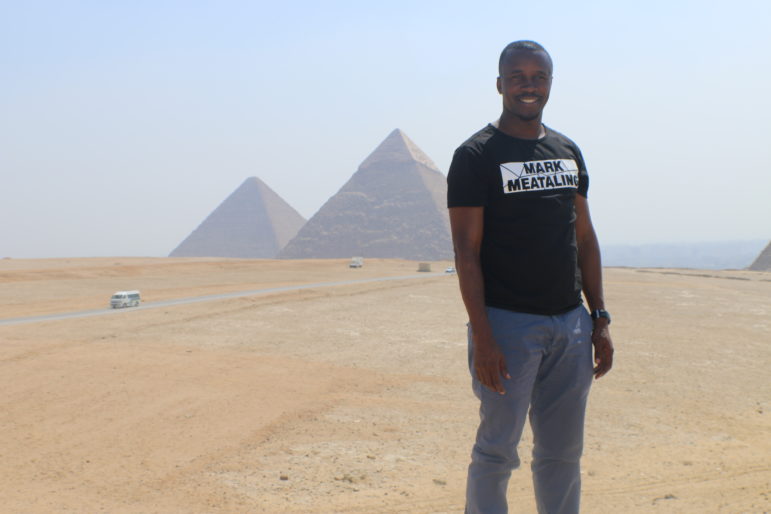

Earth Journalism Network: Funding and Training Cross-Border Reports on the Environment
Read this article in
In a typical week, Fredrick Mugira is exposing corruption in water supply contracts, digging into geolocation data to map illegal land holdings, and networking with hundreds of journalists to investigate environmental issues across Africa.
Mugira has received vital preparation along the way. In 2015, the award-winning Ugandan journalist received a fellowship from the Earth Journalism Network (EJN) to attend the United Nations Framework Convention on Climate Change, where the historic Paris Agreement was signed by nearly 200 countries.
In addition to covering the cost of attending and traveling to France, EJN trained Mugira and others in reporting skills like geojournalism.
EJN has supported thousands of journalists like Mugira around the world, building a model of editorial and financial support to investigate the most urgent story of our time — climate change.
Today, Mugira operates InfoNile.org, a geojournalism project that supports more than 150 journalists across 11 Nile River-basin countries, and Water Journalists Africa, an even larger network of more than 750 journalists across 50 African countries who investigate and report on issues around water.
“Investigative environmental journalism is the best way to expose crimes against the environment and tell working restoration solutions,” says Mugira. “This way, we can protect our environment for the coming generations and play our part as journalists in saving our communities.”
Equipping Investigative Journalists
EJN is a project of GIJN member Internews, a US-based media development group with a $66 million budget in 2019. Over 40 years, Internews’ projects have included setting up radio stations in African refugee camps, running workshops on conflict and governance, and developing Afghanistan’s leading independent radio network and national newswire.
In 2004, James Fahn, director of Internews’ environmental programs, founded EJN to help journalists from developing countries report on climate change and growing concerns about the environment.
According to Fahn, EJN supports investigative journalists in four main ways: funding, training, resources, and mentorship.
Funding comes in the form of story grants, which often cover reporting or travel costs, and can range from $500 to as high as $10,000 for individual or small groups of journalists. There are larger grants for partner organizations — typically $10,000 to $20,000 — to carry out their own training and programs.
Fahn estimates that EJN gives out more than 100 grants every year. EJN’s budget, which will be around $4 million this year, comes from private donors, foundations (the William and Flora Hewlett Foundation, the Arcadia Fund, and the Swedish International Development Agency), and bilateral aid agencies. The European Commission, the UK Department for International Development, and USAID have all supported EJN projects, as have including the Howard G. Buffett Foundation, the Ford Foundation, and the Oak Foundation, among others.
Training is key. Investigative techniques like geojournalism require mapping, geotagging, and data infographics — skills Mugira and others might not have learned otherwise.
“Not so many journalists in developing countries can afford to investigate and report a story in such a long-form storytelling technique, which calls for a lot of money,” says Mugira. “But with financial and training support, we can achieve this and further use our skills to train others.”
In addition, EJN offers a wide range of reporter resources, from webinar training on how to cover topics like zoonotic disease and tips on using datasets like #WildEye, a wildlife crime tracking tool developed by GIJN member Oxpeckers Investigative Environmental Journalism in South Africa.
Guidance and Feedback
Mentorship is the next step. EJN grantees are paired up with a veteran journalist or editor, who helps them through the course of the investigation as they pursue angles and track down information.
A team of content coordinators based around the world — from the Solomon Islands to West Africa — work to ensure high-quality investigations and hands-on feedback. This level of editorial guidance is crucial to the success of the stories, according to Sara Schonhardt, who was until recently EJN’s managing editor.
Schonhardt says that most investigative journalists have questions, run into issues in their reporting, or simply want another editor to take a look at their drafts. An additional perspective can help improve the investigation, whether there needs to be another government official quoted or if the story could use more representation from a particular group.
With a range of investigative reporters worldwide, EJN ensures that no one is left behind. “Mentorship is a large part of what we do, because increasingly with journalists being freelance, they don’t get a lot of support from media outlets,” says Schonhardt, whose new role will be as an international climate reporter at E&E News, an energy and environment reporting agency based in the POLITICO newsroom.
EJN publishes stories produced on its site too, often in partnership with global outlets: recent investigations looked at logging damage in the Solomon Islands, solar-powered water pumps in drought-ridden parts of India, and wildlife criminals in Malaysia.
Connecting Cause and Effect
For Denise Hruby, an award-winning journalist based in Vienna, EJN’s assistance was instrumental in her investigative reporting into illegal wildlife trafficking.
“It perfectly set me up for my reporting,” says Hruby, who after receiving a grant, went to an EJN-organized workshop in London where a team of experienced investigative journalists answered questions about safety and security and prepared her to attend a larger wildlife trade conference.
“I used the conference to learn about new issues and technologies in combating wildlife trade, and met conservationists from across the world; high-ranking decision-makers and policy experts, and those working in enforcing anti-trafficking legislation, including local law enforcement,” she explains.
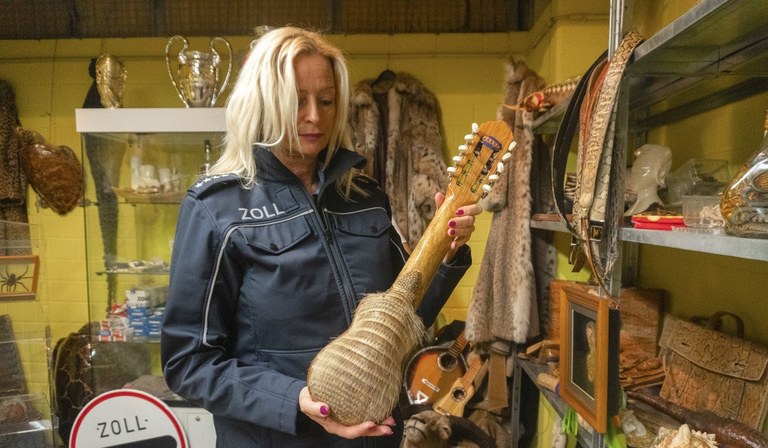
A German customs officer holds a seized string instrument made in part from an armadillo. Image: Courtesy Denise Hruby
The result was an investigative series that put a spotlight on how Europeans drive wildlife trafficking — even if it is in Africa or Asia that the environmental effects are seen. “These grants allowed freelance journalists in Europe to show the role the continent plays,” says Hurby. “Who knew about a lucrative and prolific tiger farm in Poland?”
According to Fahn, the best investigative environmental reporting often connects these causes and effects, which others can’t see, or tend to overlook. The health impacts of pollution, or the loss of biodiversity due to climate change, can be difficult for journalists to link, as the effects are often remote and happen over long periods of time.
EJN brings people together to make these connections. For example, it supported reporters and editors in Brazil, Mexico, Guatemala, and the United States to report on how Amazon destruction has led to the largest belt of algae on the planet, affecting Caribbean coasts and tourism resorts.
By building a team across multiple languages and countries to study the latest science, investigate the sources of pollution, and research the economic and ecological impacts, EJN has produced groundbreaking reports. “A lot of local media have been hollowed out in recent years and lack the resources or expertise to identify and pursue these investigations,” Fahn notes, “and even many mainstream media may simply not see environmental coverage as a priority. That’s where we can step in and play a vital role.”
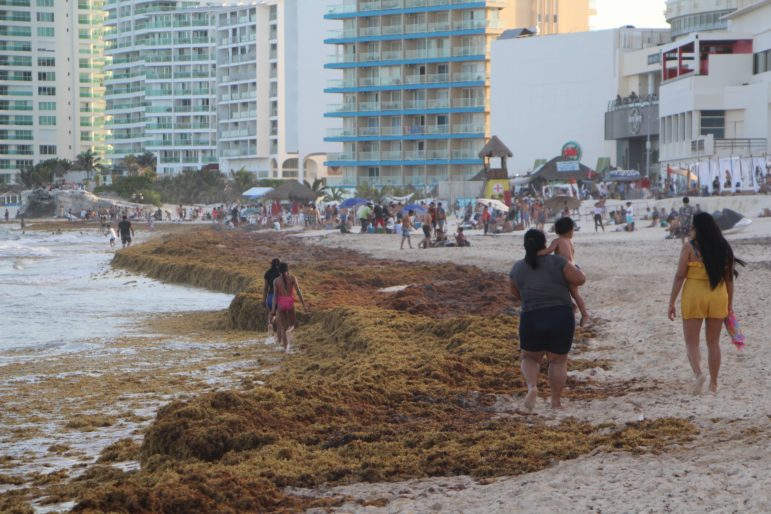
The algae belt at Quintana Roo, a popular tourist spot on the Caribbean coast in Mexico. Image: Courtesy Paola Chiomante
Investigating for Local Impact
EJN is not alone in this work. Other nonprofits such as Mongabay, Oxpeckers, and the Pulitzer Center on Crisis Reporting are dedicating serious resources to international environmental reporting. But Fahn and Schonhardt say that most news organizations around the world lack the necessary resources to tackle meaningful investigations in their respective regions.
Many environmental scandals are the result of corruption, and EJN also works with investigative journalists to hold governments accountable. “Our mission is to get their stories into local media, often in local languages, where we think they can have the most impact,” Fahn says.
Recent examples of EJN’s impact include halting a road project through the Amazon, changing mining laws in Tanzania, and addressing unjust treatment of an indigenous group in the Philippines.
To really make a difference, EJN believes that it needs to equip more investigative journalists with the tools to report on the environment in their own communities — and give them the editorial and financial support to have an impact where they are located.
“You can’t really write a story about how coastal communities in India are being affected by extreme hurricanes and severe weather if you’re sitting in the capital hundreds of miles away and aren’t speaking with them,” says Schonhardt. “More and more journalists will need to have an understanding of how to cover the environment in ways that are relevant to their communities. This isn’t a story that’s going away.”
Additional Resources
Powering Up Geo-Journalism for Investigative Environmental Reporting
Climate Change: Investigating the Story of the Century
GIJN Resource Center: Climate Crisis, Ideas for Investigative Journalists
 Will Fischer is a journalist covering the intersection of technology and media. He has worked for Business Insider, New York magazine, and the Center for Cooperative Media, and conducted local news research for City Bureau.
Will Fischer is a journalist covering the intersection of technology and media. He has worked for Business Insider, New York magazine, and the Center for Cooperative Media, and conducted local news research for City Bureau.

